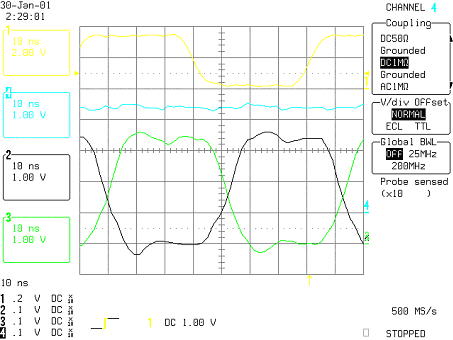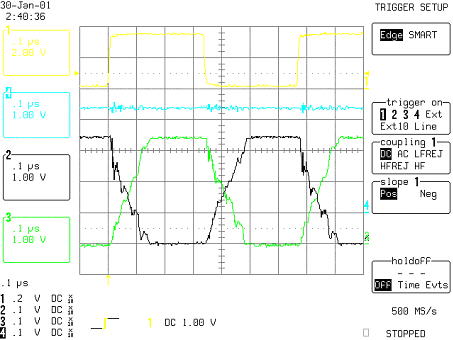 German
German
For my
master degree
I did a integrated USB line driver in a 0.6Ám CMOS process for
Melexis
(Erfurt, Germany). The challenge was to
find and
implement a completely new circuit
principle for the analog low speed driver of a
USB-Bridge.
The special problem was, to fulfill the hard USB specification 1.1 of the USB
implementers forum with a low cost technology.
The TH6503 was one of
the first bridge chips for USB and worked as a bridge between a microcontroller and the USB.
The USB
protocol is implemented in its digital core and the user can
concentrate on
the
application. Because of the serial interface
only a few pins
are needed.
The transceiver connects the digital core with the analog world. The most critical part of this analog circuit was the low speed driver. It has to fulfill several criteria, like the slew rate and slew rate matching. Of special interest is the cross over voltage. After checking several known concepts, a completely new one was found, successfully implemented and patented (EP1193873 A3, DE10048823C1).
To enhance
layout flexibility, the circuit was split into several sub cells. One part of the layout
was done by a professional layout person, the other including top level,
by myself. Assembling all the cells and doing the top wireing has been a quick
procedure since Melexis was using the
same layout program (Cadance Framework)
like at University.
A corner simulation with SpectreS confirmed that the circuit would do it's job under all conditions.
The fab out of my chip was after I left university. So the chip got tested by the test group. The principal was working (symmetry ok) and the parameters way better compared to the state of the art back in the days.
Full speed measurement Low speed measurement


The master degree was graded with mark 1.3 (very good).
Impressum, Disclaimer & Datenschutz
![]()